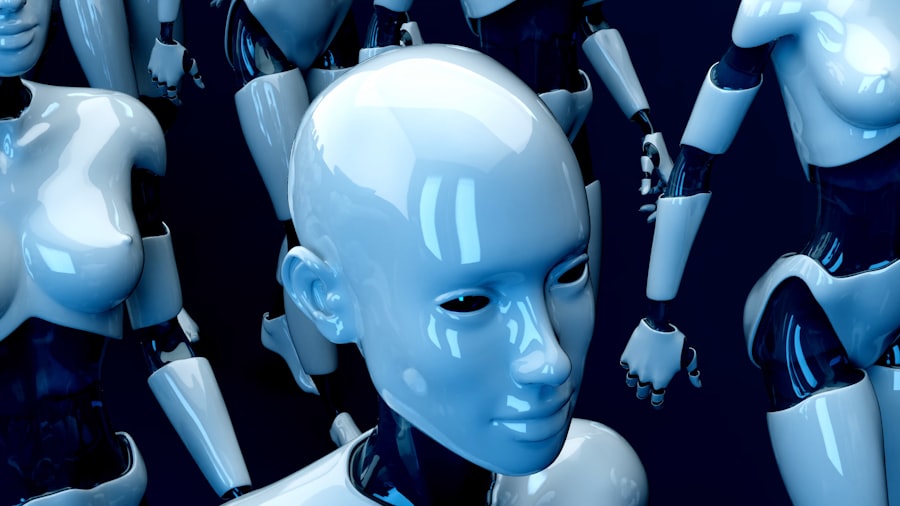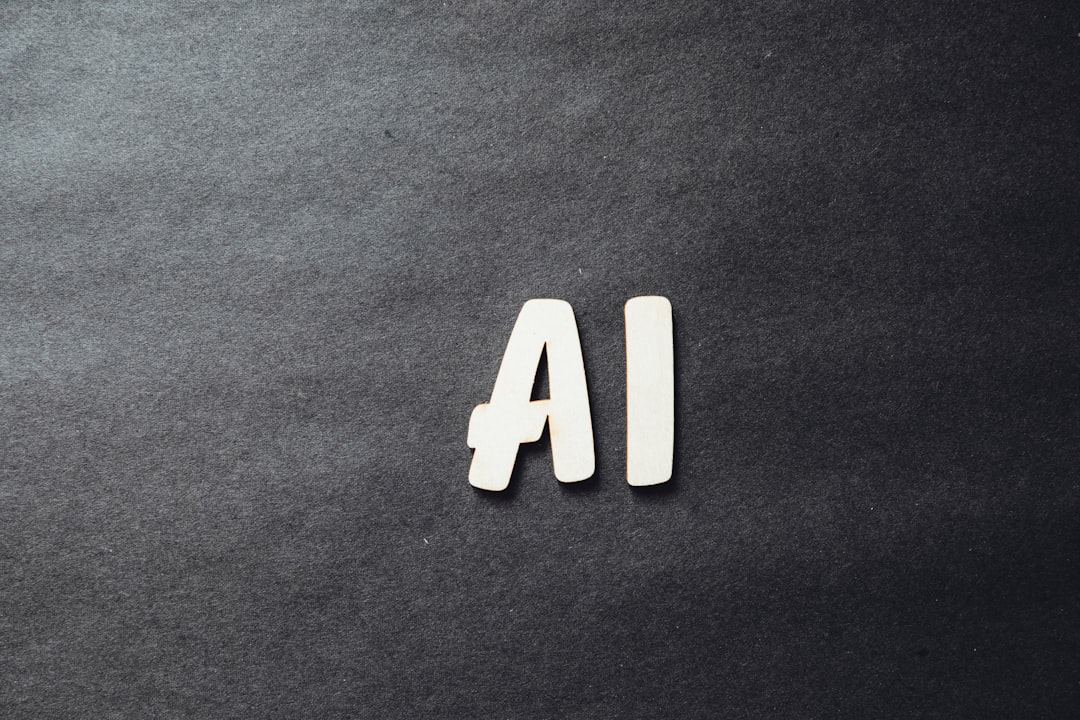As you delve into the world of artificial intelligence (AI), it becomes increasingly clear that while this technology holds immense promise, it also harbors significant risks. The rapid advancement of AI capabilities has outpaced the development of frameworks to govern its use, leading to a landscape where misuse can occur with alarming ease. From deepfakes that can manipulate public perception to autonomous systems that may act unpredictably, the potential for harm is ever-present.
Understanding these risks is crucial for anyone involved in AI development, deployment, or regulation. You may find it unsettling to consider how AI can be weaponized or used unethically. The implications of AI misuse extend beyond individual cases; they can affect entire societies and economies.
As you explore this topic, it is essential to recognize that the responsibility for preventing misuse lies not only with developers but also with policymakers, businesses, and the public. By fostering a comprehensive understanding of these risks, you can contribute to a more informed dialogue about how to harness AI’s potential while safeguarding against its dangers.
Key Takeaways
- Understanding the potential risks of AI misuse is crucial for developing proactive measures to safeguard against its negative impacts.
- Addressing the moral implications of AI development is essential for ensuring that ethical considerations are integrated into the design and implementation of AI systems.
- Implementing policies and regulations is necessary to prevent AI misuse and protect against potential harm to individuals and society.
- Ensuring transparency and accountability in AI development is key to building trust and mitigating the risks of misuse.
- Recognizing and addressing the potential for AI to perpetuate societal inequalities is important for promoting fairness and equity in AI technology.
Ethical considerations: Addressing the moral implications of AI development
When you think about the ethical considerations surrounding AI, it’s vital to recognize that technology does not exist in a vacuum. The moral implications of AI development are profound and multifaceted. As you engage with this subject, consider the responsibilities that come with creating systems capable of making decisions that impact human lives.
Questions about autonomy, consent, and the potential for harm must be at the forefront of any discussion about AI ethics. You may find yourself grappling with dilemmas such as whether it is acceptable for an AI to make life-and-death decisions in healthcare or military applications. Moreover, the ethical landscape is further complicated by the diverse cultural and societal values that inform our understanding of right and wrong.
As you navigate these complexities, it becomes clear that a one-size-fits-all approach to AI ethics is inadequate. Engaging with a variety of perspectives can enrich your understanding and help you appreciate the nuances involved in ethical AI development. By fostering an inclusive dialogue that considers different viewpoints, you can contribute to creating AI systems that are not only effective but also aligned with our shared moral values.
Regulation and governance: Implementing policies to prevent AI misuse

As you consider the role of regulation and governance in AI, it’s essential to recognize that effective policies are crucial for mitigating risks associated with misuse. Governments and regulatory bodies must take proactive steps to establish frameworks that guide the ethical development and deployment of AI technologies. This involves not only creating laws and guidelines but also ensuring that they are adaptable to the rapidly evolving nature of AI.
You may find it beneficial to explore existing regulatory models and assess their effectiveness in addressing the unique challenges posed by AI. In addition to formal regulations, fostering a culture of accountability within organizations is vital.
By encouraging companies to adopt best practices voluntarily, you can help create an environment where ethical considerations are prioritized alongside innovation. This collaborative approach can lead to more robust governance structures that effectively address potential misuse while promoting responsible AI advancement.
Transparency and accountability: Ensuring clear communication and responsibility in AI development
| Metrics | Data |
|---|---|
| Number of AI development team members | 25 |
| Frequency of progress updates | Weekly |
| Number of documented AI development processes | 10 |
| Number of AI development milestones | 5 |
Transparency and accountability are cornerstones of responsible AI development. As you explore this topic, consider how clear communication can foster trust among users, developers, and regulators alike. When AI systems operate as “black boxes,” their decision-making processes become opaque, leading to skepticism and fear about their reliability.
You may find it essential to advocate for practices that promote transparency, such as open-source algorithms or detailed documentation of AI training data and methodologies. Moreover, accountability mechanisms must be established to ensure that developers and organizations are held responsible for the consequences of their AI systems. As you engage with this issue, think about how accountability can be enforced through audits, impact assessments, and public reporting.
By promoting a culture where developers are answerable for their creations, you can help mitigate the risks associated with AI misuse and encourage a more responsible approach to technology development.
Bias and discrimination: Recognizing and addressing the potential for AI to perpetuate societal inequalities
One of the most pressing concerns in AI development is the potential for bias and discrimination to be embedded within algorithms. As you examine this issue, consider how historical inequalities can be perpetuated or even exacerbated by AI systems trained on biased data. You may find it alarming to learn that biased algorithms can lead to unfair treatment in critical areas such as hiring, law enforcement, and lending.
Recognizing these risks is the first step toward addressing them. To combat bias in AI, it is essential to implement strategies that promote fairness and inclusivity in data collection and algorithm design. As you engage with this topic, think about how diverse teams can contribute to more equitable outcomes by bringing varied perspectives to the table.
Additionally, advocating for regular audits of AI systems can help identify and rectify biases before they cause harm. By prioritizing fairness in AI development, you can play a crucial role in ensuring that technology serves as a tool for empowerment rather than oppression.
Cybersecurity measures: Protecting AI systems from malicious attacks and unauthorized access

As you explore the intersection of AI and cybersecurity, it becomes evident that protecting these systems from malicious attacks is paramount. The increasing reliance on AI technologies makes them attractive targets for cybercriminals seeking to exploit vulnerabilities for financial gain or other nefarious purposes. You may find it essential to advocate for robust cybersecurity measures tailored specifically for AI systems, including encryption protocols, access controls, and continuous monitoring.
Moreover, fostering a culture of security awareness among developers and users is crucial in mitigating risks associated with cyber threats. As you engage with this topic, consider how training programs can equip individuals with the knowledge needed to recognize potential vulnerabilities and respond effectively to security incidents. By prioritizing cybersecurity in AI development, you can help safeguard not only individual systems but also the broader ecosystem from malicious actors seeking to exploit weaknesses.
Education and awareness: Promoting understanding of AI technology and its potential risks
Education plays a pivotal role in fostering a well-informed society capable of navigating the complexities of AI technology. As you consider this aspect, think about how promoting awareness about both the benefits and risks associated with AI can empower individuals to make informed decisions. You may find it beneficial to advocate for educational initiatives that target various audiences, from schoolchildren learning about technology to professionals seeking to understand its implications in their fields.
In addition to formal education programs, raising public awareness through campaigns and community engagement can help demystify AI technology. As you engage with different stakeholders, emphasize the importance of clear communication about how AI works and its potential impact on daily life. By fostering a culture of understanding around AI, you can contribute to a more informed public discourse that encourages responsible use and oversight of this powerful technology.
Collaboration and partnerships: Working with industry leaders and experts to develop best practices for AI safeguarding
Collaboration is key when it comes to developing best practices for safeguarding AI technologies. As you explore this topic, consider how partnerships between industry leaders, academic institutions, and government agencies can lead to more effective solutions for preventing misuse. By bringing together diverse expertise and perspectives, you can help create a comprehensive approach that addresses the multifaceted challenges posed by AI.
You may find it valuable to engage in cross-sector initiatives aimed at establishing guidelines and standards for ethical AI development. These collaborations can facilitate knowledge sharing and foster innovation while ensuring that ethical considerations remain at the forefront of technological advancement. By working together with various stakeholders, you can contribute to building a robust framework that promotes responsible AI practices across industries.
Continuous monitoring and evaluation: Establishing mechanisms to assess and mitigate AI misuse
As you consider the importance of continuous monitoring and evaluation in AI development, it becomes clear that proactive measures are essential for identifying potential misuse before it escalates into significant issues. Establishing mechanisms for ongoing assessment allows organizations to adapt their practices based on real-world outcomes and emerging challenges. You may find it beneficial to advocate for regular audits of AI systems as part of a comprehensive risk management strategy.
Moreover, fostering a culture of feedback within organizations can enhance accountability and encourage continuous improvement in AI practices. As you engage with this topic, think about how open channels for reporting concerns or incidents related to AI misuse can empower individuals within organizations to take action when necessary. By prioritizing continuous monitoring and evaluation, you can help ensure that AI technologies remain aligned with ethical standards while minimizing risks associated with misuse.
International cooperation: Fostering global efforts to prevent AI misuse and establish common standards
In an increasingly interconnected world, international cooperation is vital for addressing the challenges posed by AI misuse on a global scale. As you explore this topic, consider how collaborative efforts among nations can lead to the establishment of common standards and best practices for ethical AI development. You may find it essential to advocate for international agreements that promote transparency, accountability, and fairness in AI technologies across borders.
Furthermore, engaging with global organizations dedicated to advancing responsible AI practices can facilitate knowledge sharing and foster innovation on an international level. As you participate in these discussions, emphasize the importance of inclusivity in shaping global standards that reflect diverse cultural values and perspectives. By fostering international cooperation, you can contribute to creating a unified approach that addresses the risks associated with AI misuse while promoting its benefits worldwide.
The importance of proactive measures to safeguard against AI misuse
As you reflect on the multifaceted challenges posed by artificial intelligence misuse, it becomes evident that proactive measures are essential for safeguarding against potential harms. From ethical considerations to regulatory frameworks, each aspect plays a crucial role in shaping a responsible approach to technology development. By prioritizing transparency, accountability, education, collaboration, and continuous monitoring, you can contribute significantly to creating an environment where AI serves as a force for good rather than a source of risk.
Ultimately, your engagement with these issues can help foster a culture of responsibility within the tech community and beyond. By advocating for best practices and promoting awareness about the potential risks associated with AI technologies, you can play an active role in shaping a future where innovation is balanced with ethical considerations. The journey toward responsible AI development requires collective effort; by taking proactive steps today, you can help ensure a safer tomorrow for all.
In the rapidly evolving field of artificial intelligence, ensuring ethical development and deployment is crucial to prevent potential misuse and unintended consequences. One effective approach to achieving this is by implementing robust regulatory frameworks and promoting transparency in AI systems. For more insights on safeguarding against the risks associated with AI, you can explore this related article that delves into strategies for preventing artificial intelligence from causing harm. This resource provides valuable perspectives on balancing innovation with responsibility, ensuring that AI technologies contribute positively to society.
FAQs
What is artificial intelligence (AI)?
Artificial intelligence (AI) refers to the simulation of human intelligence in machines that are programmed to think and act like humans. This includes tasks such as learning, problem-solving, and decision-making.
Why is it important to prevent artificial intelligence?
Preventing artificial intelligence from causing harm is important because AI has the potential to be misused or to cause unintended consequences. It is important to ensure that AI is developed and used in a responsible and ethical manner.
How can artificial intelligence be prevented from causing harm?
Artificial intelligence can be prevented from causing harm through careful and responsible development, regulation, and oversight. This includes ethical guidelines, transparency, and accountability in the design and use of AI systems.
What are some potential risks of artificial intelligence?
Some potential risks of artificial intelligence include job displacement, privacy concerns, bias and discrimination, and the potential for AI to be used for malicious purposes.
What are some best practices for preventing artificial intelligence from causing harm?
Best practices for preventing artificial intelligence from causing harm include conducting thorough risk assessments, ensuring transparency and accountability in AI systems, and involving diverse stakeholders in the development and oversight of AI technologies.
